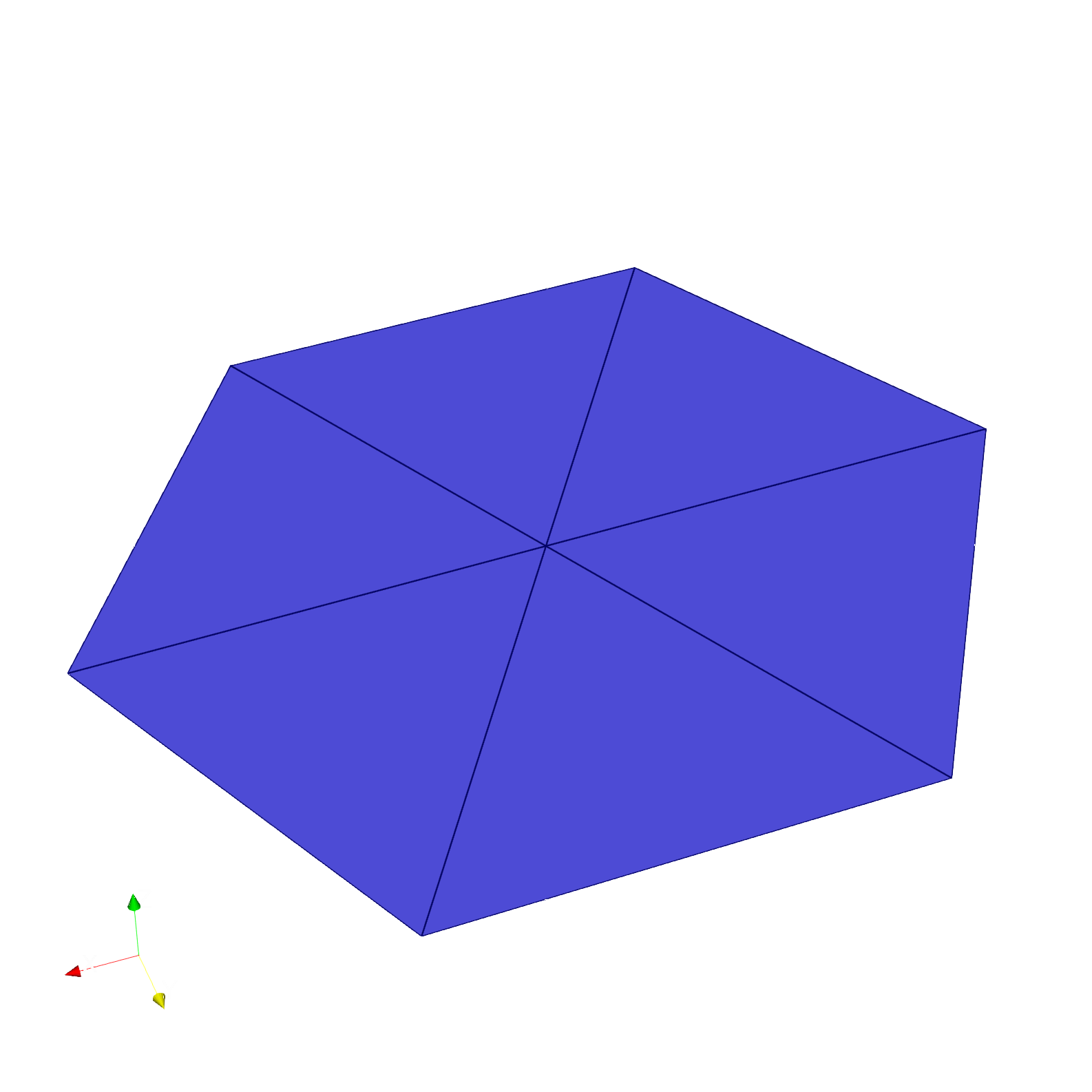System Class#
PyMembrane uses a modular design where different components act as autonomously as possible. The System class encompasses five independent classes, which include three that form the mesh (vertices, edges, and faces), two supplementary classes to compute geometrical properties over the mesh, and functions for data export for visualization and analysis<dumper>.
Before you start#
# import pymembrane
import pymembrane as mb
# create a new system instance
system = mb.System()
Loading my first mesh#
Pymembrane works with meshes in _inp_ format. For example, a vertex file for a hexagon looks like:
Vertex File (id x y z type):
0 0.0 0.0 0.0 1
1 1.0 0.0 0.0 1
2 0.5 0.8660254038 0.0 1
3 -0.5 0.8660254038 0.0 1
4 -1.0 0.0 0.0 1
5 -0.5 -0.8660254038 0.0 1
6 0.5 -0.8660254038 0.0 1
and the corresponding face file:
Face File (id v1 v2 v3 normal):
0 0 1 2 1
1 0 2 3 1
2 0 3 4 1
3 0 4 5 1
4 0 5 6 1
5 0 6 1 1
Now that we have the faces and vertices files we can create a mesh as follows:
vertex_file = 'vertices.inp'
face_file = 'faces.inp'
system.read_mesh_from_files(files={'vertices':vertex_file, 'faces':face_file})
Visualization#
PyMembrane can export meshes to vtk and ply files. To create a dumper for a given mesh, we need to do:
dump = system.dump()
dump.ply("hexagon") #for ply
dump.vtk("hexagon") #for vtk

In addition, the _vtk_ format can be set to legacy format by:
dump.setvtkLegacyFormat(True)
Note
_VTK_ and _json_ format is desirable since all the properties of the mesh are fully exported.
Visualization#
PyMembrane offers various mesh-related computations using the compute class. To execute computations for a given mesh, follow the steps:
mesh_compute = system.compute()
edge_lengths = mesh_compute.edge_lengths()
face_areas = mesh_compute.face_areas()
face_normals = mesh_compute.face_normals() #to be stored in the face class
Additionally, compute class can be used to compute thermodynamic properties of the mesh. For example, the following code computes the pressure of a given mesh:
mesh_compute.pressure(evolver)
Note
To calculate thermodynamic quantities, one must define an Evolver class. This necessity arises because thermodynamic properties are intrinsically linked to the force potentials in the system. Although the compute<compute> class operates independently and isn’t a subset of the system class, it has been integrated with the system class for user convenience. This setup facilitates the computation of various properties for a specified mesh.